|
|
|

|
|||||

|
|

Home-building design and manufacturing company Masco Corporation (NYSE:MAS) reported Q2 CY2025 results exceeding the market’s revenue expectations, but sales fell by 1.9% year on year to $2.05 billion. Its non-GAAP profit of $1.30 per share was 20% above analysts’ consensus estimates.
Is now the time to buy Masco? Find out by accessing our full research report, it’s free.
“During the first half of this year, we demonstrated our ability to successfully navigate a dynamic geopolitical and macroeconomic environment through our focused execution,” said Masco President and CEO, Jon Nudi.
Headquartered just outside of Detroit, MI, Masco (NYSE:MAS) designs and manufactures home-building products such as glass shower doors, decorative lighting, bathtubs, and faucets.
A company’s long-term performance is an indicator of its overall quality. Any business can put up a good quarter or two, but many enduring ones grow for years. Regrettably, Masco’s sales grew at a sluggish 2.7% compounded annual growth rate over the last five years. This fell short of our benchmarks and is a poor baseline for our analysis.
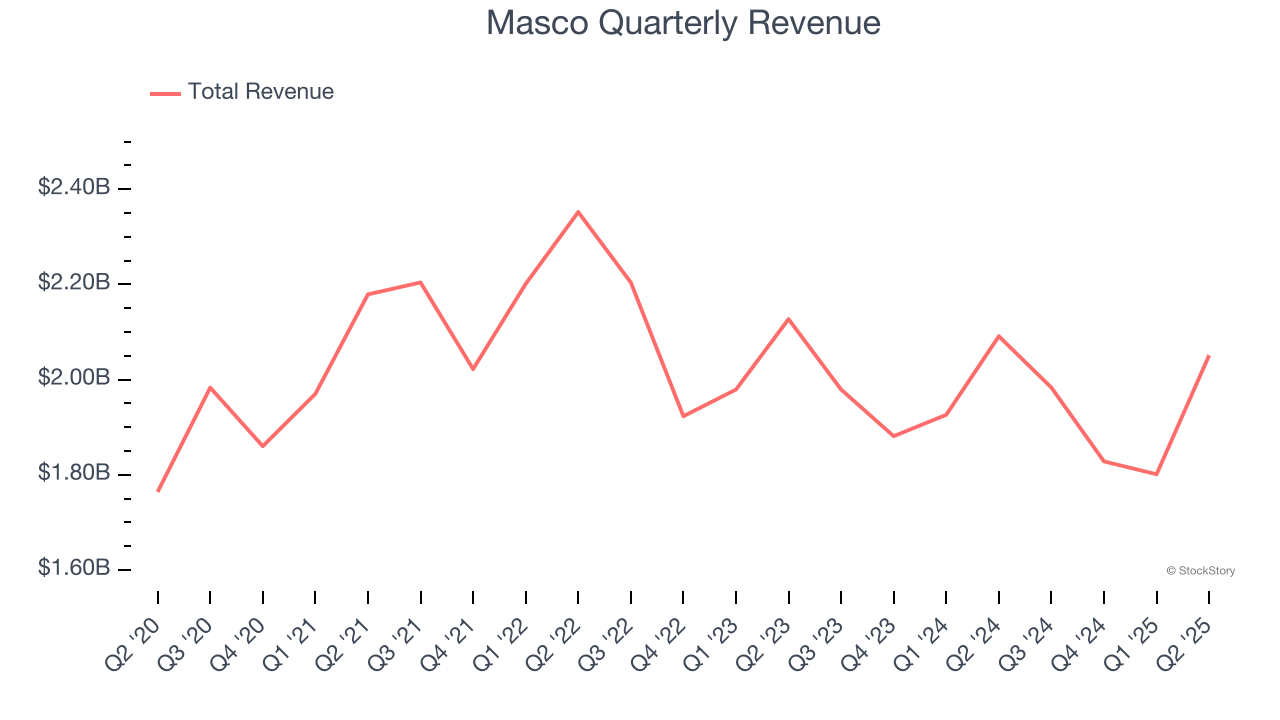
Long-term growth is the most important, but within industrials, a half-decade historical view may miss new industry trends or demand cycles. Masco’s performance shows it grew in the past but relinquished its gains over the last two years, as its revenue fell by 3.5% annually.
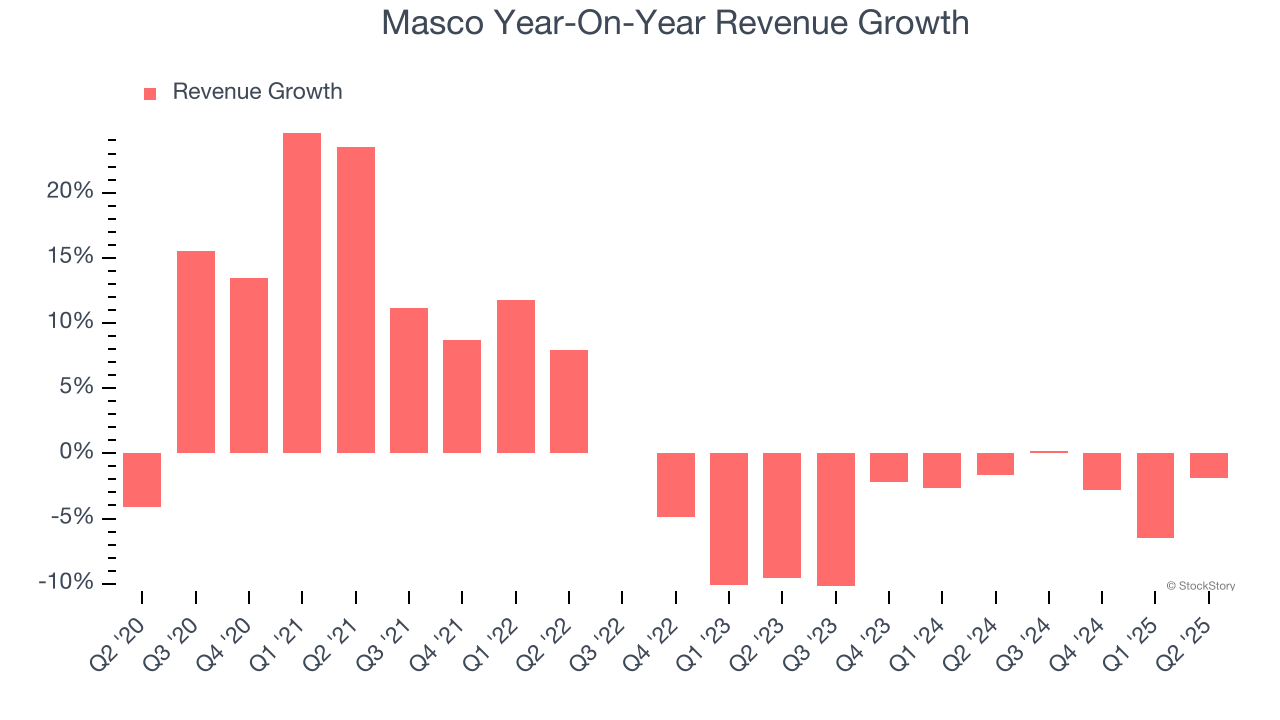
We can better understand the company’s sales dynamics by analyzing its organic revenue, which strips out one-time events like acquisitions and currency fluctuations that don’t accurately reflect its fundamentals. Over the last two years, Masco’s organic revenue averaged 2.8% year-on-year declines. Because this number aligns with its two-year revenue growth, we can see the company’s core operations (not acquisitions and divestitures) drove most of its results.
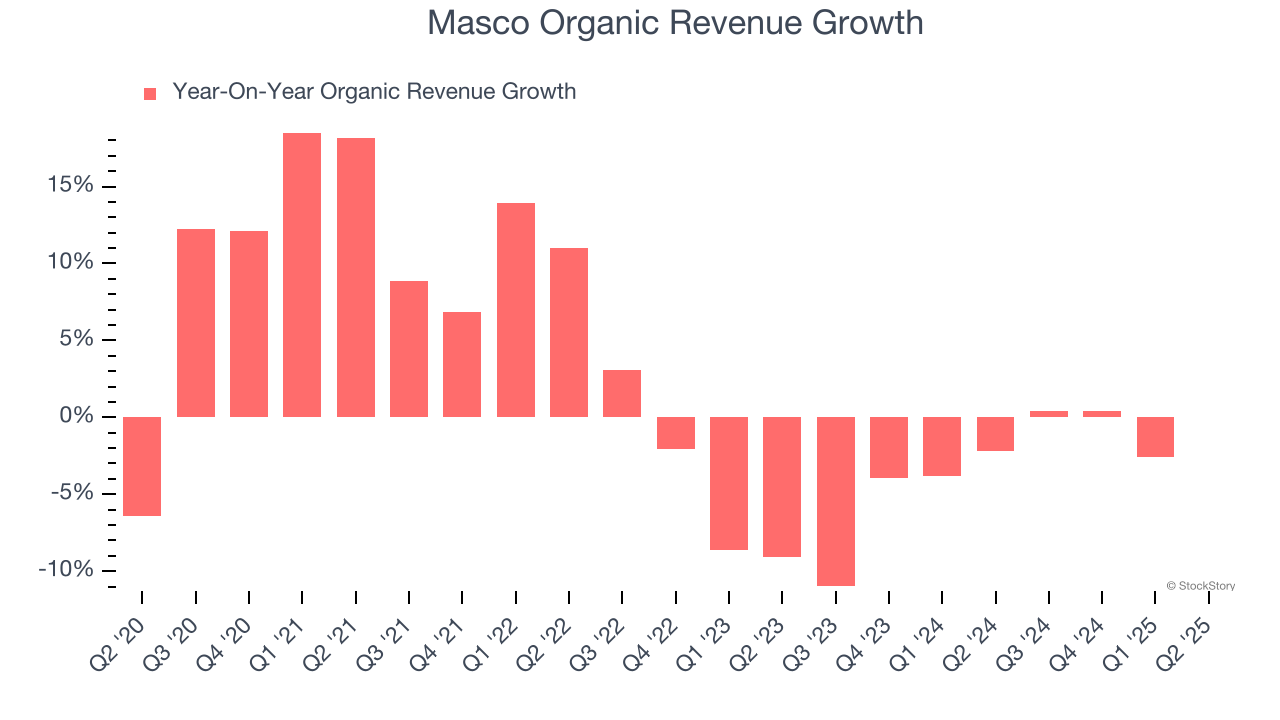
This quarter, Masco’s revenue fell by 1.9% year on year to $2.05 billion but beat Wall Street’s estimates by 2.5%.
Looking ahead, sell-side analysts expect revenue to grow 1.8% over the next 12 months. While this projection indicates its newer products and services will catalyze better top-line performance, it is still below the sector average.
Here at StockStory, we certainly understand the potential of thematic investing. Diverse winners from Microsoft (MSFT) to Alphabet (GOOG), Coca-Cola (KO) to Monster Beverage (MNST) could all have been identified as promising growth stories with a megatrend driving the growth. So, in that spirit, we’ve identified a relatively under-the-radar profitable growth stock benefiting from the rise of AI, available to you FREE via this link.
Operating margin is an important measure of profitability as it shows the portion of revenue left after accounting for all core expenses – everything from the cost of goods sold to advertising and wages. It’s also useful for comparing profitability across companies with different levels of debt and tax rates because it excludes interest and taxes.
Masco has been a well-oiled machine over the last five years. It demonstrated elite profitability for an industrials business, boasting an average operating margin of 16.9%. This result isn’t too surprising as its gross margin gives it a favorable starting point.
Looking at the trend in its profitability, Masco’s operating margin decreased by 1.6 percentage points over the last five years. This raises questions about the company’s expense base because its revenue growth should have given it leverage on its fixed costs, resulting in better economies of scale and profitability.
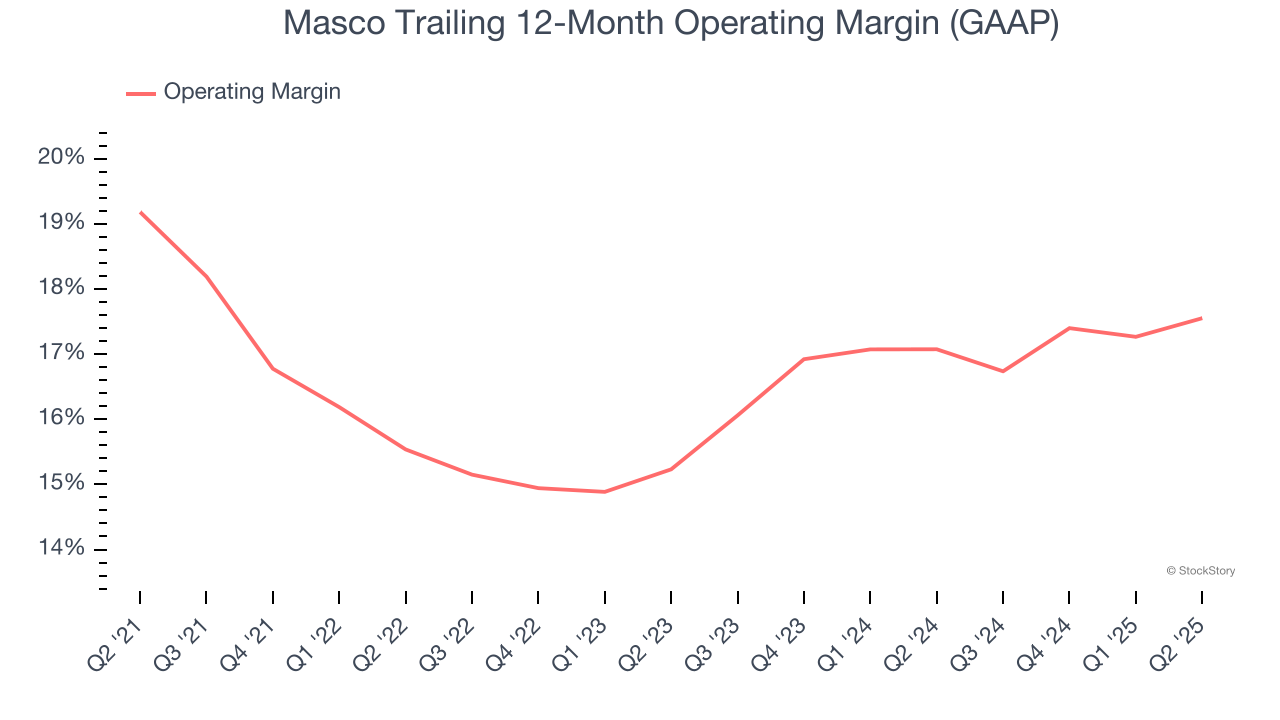
This quarter, Masco generated an operating margin profit margin of 20.1%, up 1.1 percentage points year on year. The increase was encouraging, and because its operating margin rose more than its gross margin, we can infer it was more efficient with expenses such as marketing, R&D, and administrative overhead.
We track the long-term change in earnings per share (EPS) for the same reason as long-term revenue growth. Compared to revenue, however, EPS highlights whether a company’s growth is profitable.
Masco’s EPS grew at a solid 10.4% compounded annual growth rate over the last five years, higher than its 2.7% annualized revenue growth. However, this alone doesn’t tell us much about its business quality because its operating margin didn’t improve.
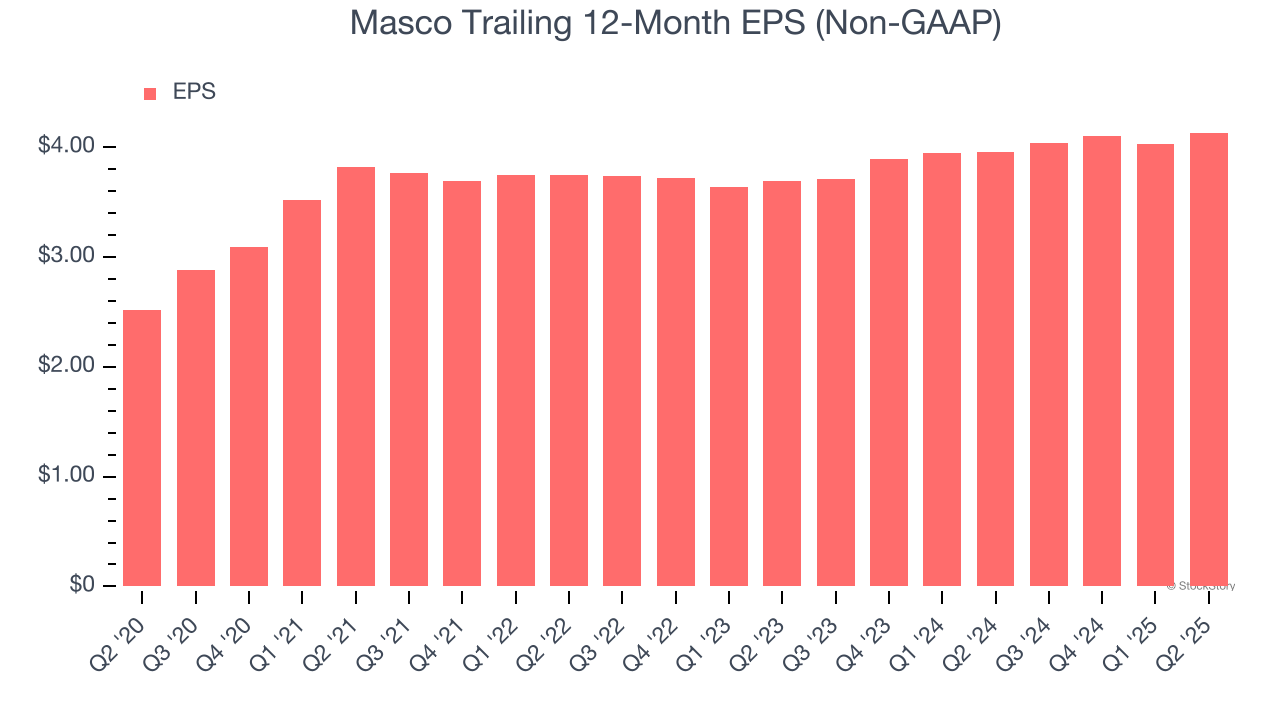
Diving into Masco’s quality of earnings can give us a better understanding of its performance. A five-year view shows that Masco has repurchased its stock, shrinking its share count by 19.8%. This tells us its EPS outperformed its revenue not because of increased operational efficiency but financial engineering, as buybacks boost per share earnings.
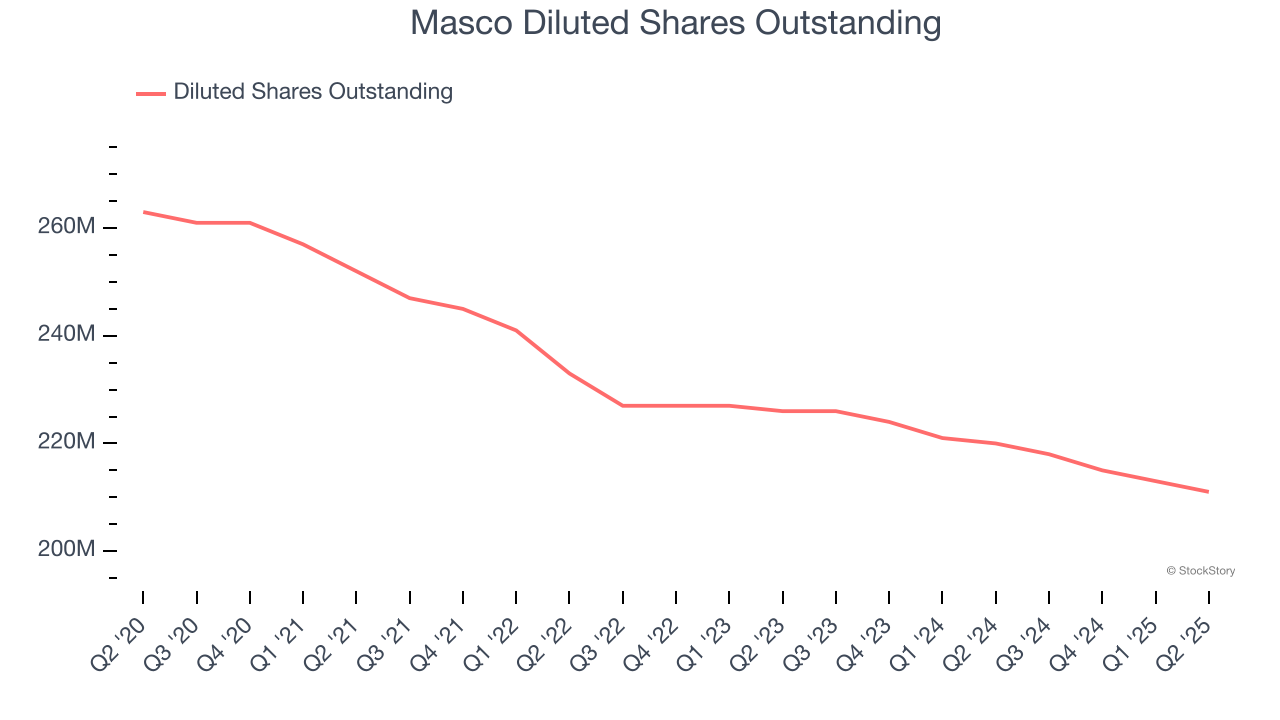
Like with revenue, we analyze EPS over a more recent period because it can provide insight into an emerging theme or development for the business.
For Masco, its two-year annual EPS growth of 5.8% was lower than its five-year trend. We hope its growth can accelerate in the future.
In Q2, Masco reported adjusted EPS at $1.30, up from $1.20 in the same quarter last year. This print easily cleared analysts’ estimates, and shareholders should be content with the results. Over the next 12 months, Wall Street expects Masco’s full-year EPS of $4.13 to shrink by 10.2%.
We were impressed by how significantly Masco blew past analysts’ EPS and EBITDA expectations this quarter. We were also glad its full-year EPS guidance trumped Wall Street’s estimates. Zooming out, we think this was a solid print. The stock traded up 10.6% to $72.70 immediately after reporting.
Sure, Masco had a solid quarter, but if we look at the bigger picture, is this stock a buy? When making that decision, it’s important to consider its valuation, business qualities, as well as what has happened in the latest quarter. We cover that in our actionable full research report which you can read here, it’s free.
| Dec-18 | |
| Dec-17 | |
| Dec-11 | |
| Dec-08 | |
| Dec-05 | |
| Dec-04 | |
| Dec-04 | |
| Dec-02 | |
| Nov-28 | |
| Nov-20 | |
| Nov-19 | |
| Nov-14 | |
| Nov-12 | |
| Nov-10 | |
| Nov-06 |
Join thousands of traders who make more informed decisions with our premium features. Real-time quotes, advanced visualizations, backtesting, and much more.
Learn more about FINVIZ*Elite